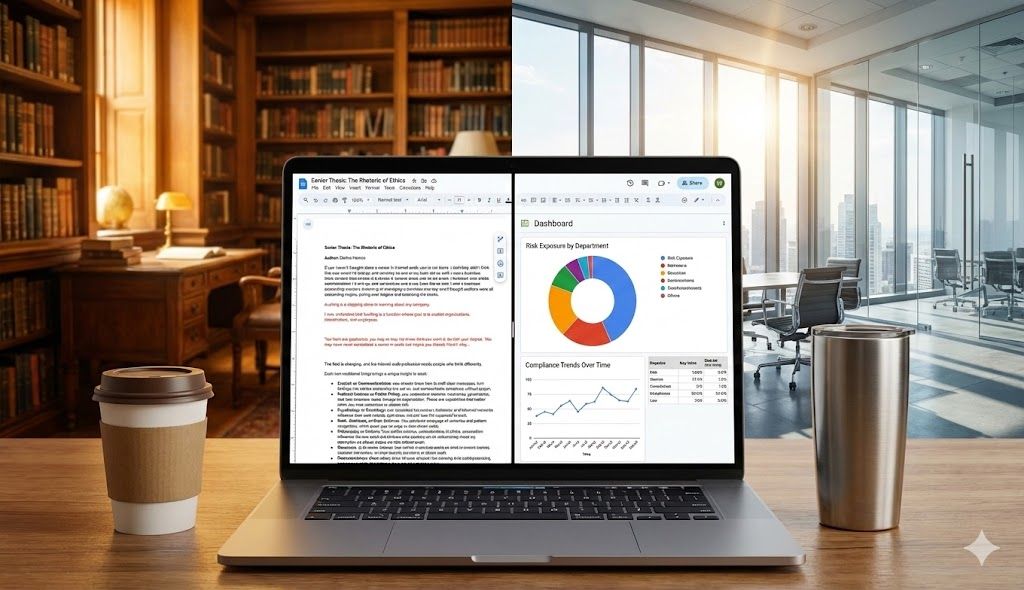The Unexpected Career That Turned Out to Be My Perfect Fit
When I was a child, my parents read to me every night before I went to bed. One evening, like many kids of my generation, I was introduced to the Harry Potter series. But unlike most, I asked my dad to stop reading with just about a hundred pages to go. I couldn’t stand how often Harry and his friends broke the rules and seemed to get away with it.
That moment stayed with me. Not because I disliked the story, but because it made me realize something about myself: I care deeply about structure, fairness, and systems that work. Back then, I didn’t have the vocabulary for it. Today, I do. That instinct has led me to a career in internal audit and compliance.
More than just rules
Of course, the real world isn’t as simple as “don’t go into the Chamber of Secrets.” Rules in business, like laws, regulations, and internal policies, are rarely written in plain language. They’re complex, dense, and sometimes contradictory. But that’s what makes working in compliance so intellectually rewarding. It’s not about blind obedience. It’s about interpretation, application, and optimization.
I’ve always been drawn to how systems are built and how they’re meant to operate. In school, I was fascinated by regulatory frameworks, the process of translating legislation into enforceable rules. However, I also knew I didn’t want to become a politician, a regulator, or a litigator. I wanted to work where the rules meet the real world.
Compliance as puzzle-solving
When I eventually stumbled on internal audit and compliance, I immediately knew that I had found exactly what I had been looking for. This field combines two things I love: following the rules and solving complex problems. Working in compliance is like doing a jigsaw puzzle without a reference picture. You have to reverse-engineer a process based only on the result you’re aiming for, using your knowledge of each part of the business that is impacted to suggest the best policies possible.
Sure, you can look at other businesses to get an idea of what might look best for you, but there’s rarely a one-size-fits-all approach. Once those policies are in place, the real fun begins: testing them.
Testing, tuning, and continuous improvement
Testing internal controls is like shifting from a jigsaw puzzle to a logic game. You’re no longer assembling; you’re validating. You're asking: “What evidence proves this process is working as intended?” And equally important: “Is that evidence sufficient?”
Sometimes, a few samples are enough to give you confidence. Other times, a deeper dive is required. And when you find exceptions or failures? That’s not a setback. It is a new puzzle. Where did the breakdown occur? How can we fix it? And how do we do that without creating new risks elsewhere?
This iterative process of design, test, and adapt is what makes compliance so dynamic. It’s not about catching people doing things wrong. It’s about helping businesses do things right.
A profession with purpose
What drew me to this work is the same thing that made me put down Harry Potter all those years ago: a belief that rules matter. But over time, I’ve come to understand that good compliance isn’t about rigid adherence. It is about thoughtful interpretation, careful application, and continuous improvement. In this field, I’ve found a place where my instinct to research, examine, and optimize is as essential as the rules themselves.
For someone who loves systems, puzzles, and meaningful work, I can’t imagine anything more rewarding.




